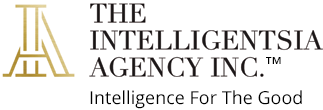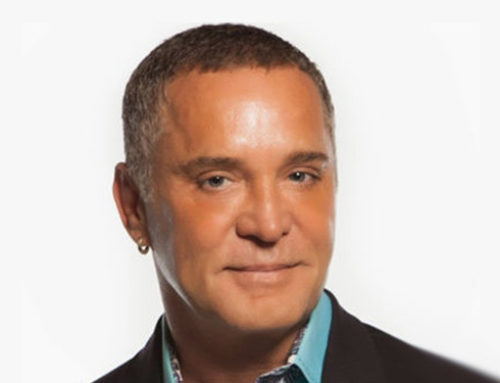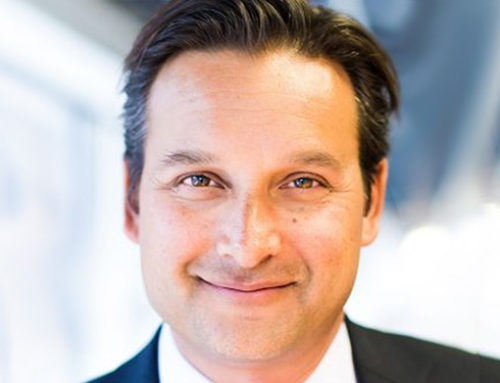
Daniel Burrus
His Experience Reaches Back While His Ideas Leap Ahead.
The Science of Tech Forecasting
- Burrus created the Taxonomy of High Technology, identifying the 20 core technologies that would shape the future for decades to come
- Burrus identified 3 Digital Accelerators — Computing Power, Bandwidth, and Digital Storage — that would provide a predictable timeframe for tech-driven change
- Burrus pioneered the Hard Trend Methodology that provided the ultimate innovation and risk management tool
- Linear/Exponential trends are disruptive and predictable. Cyclical trends are predictable but not disruptive or exponential
- Agility is a reactive strategy. Burrus created the Anticipatory Model for predicting problems and disruptions before they occur, allowing organizations to become a disruptor with low riskAgility is out.
In a career spanning more than three decades, Daniel Burrus has done more than keep up with the changing times. He has accurately predicted what many of those changes and disruptions would be.
In 1983, as personal computers were still emerging, Burrus used Moore’s Law, which states that computer processing power will double every 18 months while costs will be cut in half. “Not a lot of people were looking at Moore’s Law in the early 1980s, but I knew he nailed it,” Burrus said in a recent Q&A with ManageMagazine.
His early research on global innovations in science and technology and that single principle inspired much of his early thinking, and Burrus was the first to write about the predictability and power of technology-driven exponential change.
“I started out as a researcher and taught biology and physics, so where other futurists were making educated guesses, I was applying scientific principles to forecasting,” Burrus explains. His science-mindedness led him to analyze trends and categorize them as either Hard Trends, which are sure to happen, or Soft Trends, which could happen.
He also identified what he calls the Three Digital Accelerators — computing power, bandwidth, and digital storage — that provided accurate timeframes for his predictions. If a Hard Trend could be advanced by using one of these, its exponential growth became even more certain.
His formulas worked; Burrus foreshadowed some of today’s most distinct technology well before the innovations came to fruition. In 1983, he published a list of 20 core technologies that would shape the future, which included digital electronics, the Internet, optical storage, wireless networking, artificial intelligence, nanotech, supercomputers, genetic engineering, and others that would drive economic growth for decades to come.
Hard Trend Methodology
One of the first steps in Burrus’ forecasting methodology is to spot trends and separate them into two categories:
- Hard Trends, which are based on future facts and are 100% certain to happen
- Soft Trends, which are based on various levels of assumptions that might happen
“It’s a powerful way to manage risk: Strategies based on uncertainty have high risk; strategies based on certainty have low risk,” Burrus explains.
One of the most-asked questions is how to distinguish between the two. To aid in that thinking, Burrus teaches his clients to first determine if a trend is cyclical or linear/exponential. For example, the four seasons are cyclical; summer will come at this time again next year and be followed by fall.
According to Burrus, there are over 500 cycles that repeat. They are predictable, but there’s another kind of predictable change, too. It’s linear/exponential: It’s going in one direction, and its speed is exponential.
“Once you get a smartphone, you’re not going back to a ‘dumb’ phone,” Burrus explains. “Smartphones will get exponentially smarter using AI and other transformational components. They will have many more business, health, and educational applications, not less. We know this as a future fact, a Hard Trend.”
Burrus explains that there are three main categories of Hard Trends that yield high predictability: Technology, Demographics, and Government Regulation. One example is the aging demographic in the United States. “Baby Boomers are going to get older, not younger. This is a future fact, and based on it, we can predict an amazing number of both problems and opportunities,” says Burrus.
Here’s a simple breakdown of Hard vs. Soft Trends:
Hard Trends
- Will happen
- Based on future facts
- Can’t stop them from happening, but can learn to anticipate them
- Major positive: Identifying Hard Trends leads to crucial business insights, even disruption
- Three Main Categories for Hard Trends: Tech, Demographics, Gov. Regulations
Soft Trends
- Might happen
- Based on assumptions, not facts
- Many are likely to happen, but they are uncertain and carry more risk
- Major positive: You can influence a Soft Trend to your advantage; if you don’t like it, change it
- Two types of assumptions: Hard Assumptions are well researched; Soft Assumptions are not researched
Consultant at Heart
Burrus has written seven books, including the international bestseller Technotrends, The New York Times and Wall Street Journal bestseller Flash Foresight, and his latest Amazon bestseller, The Anticipatory Organization: Turn Disruption and Change Into Opportunity and Advantage.
Burrus is more than a writer, speaker, and consultant. He is also a highly successful entrepreneur who has applied the principles he teaches to start six businesses; four were national leaders in the U.S. in their very first year.
Burrus is a strategic advisor, helping executives from leading companies around the world to develop game-changing strategies by identifying the Hard Trends shaping their industries to accelerate innovation and growth. He has written thousands of articles and delivered 2,800 keynote speeches globally in order to share his Anticipatory Model and Hard Trend Methodology for transforming results with audiences.
“I’m proud to have proven that it’s possible to accurately predict the future, but more importantly, I am thrilled to be able to teach others to do this so they can also turn disruptive change into an advantage,” says Burrus.
Anticipate What’s Next
There is one question Burrus is repeatedly asked by his audiences, including his million+ social media followers: What’s the next big thing?
Burrus’ advice is to implement his anticipatory leadership skills to have the confidence that comes from certainty to make bold moves. “Because the world is changing at an exponential rate, many businesses think that being agile is the answer. Agility is good, but it didn’t help Dell, HP, Sony, Research In Motion, and countless others who have been struggling to keep up. A better way is to be able to anticipate disruptions and game-changing opportunities before they happen and use that to drive low-risk innovations.”
Amazon is not an agile company; it is an anticipatory company. All the companies it is constantly disrupting need to be agile. Two other prime examples are Uber and Airbnb. These tech-based companies did not use agility to come up with their multibillion dollar start-up ideas; they identified unmet needs and the Hard Trends from the transportation and travel industries to pinpoint where growth would happen — and made it happen first.
In his newest keynotes and consultations, Burrus focuses on teaching what he calls the Missing Competency, the ability to anticipate. “My passion is to wake people up to the fact that they too can learn to anticipate what lies ahead and use that knowledge to make a significant difference in work and life, and shape a better future for all.”
=================
This is an article by Daniel Burrus. Click here to check his profile page on our website, and read about his biography, speaking topics, keynotes, or clients.



